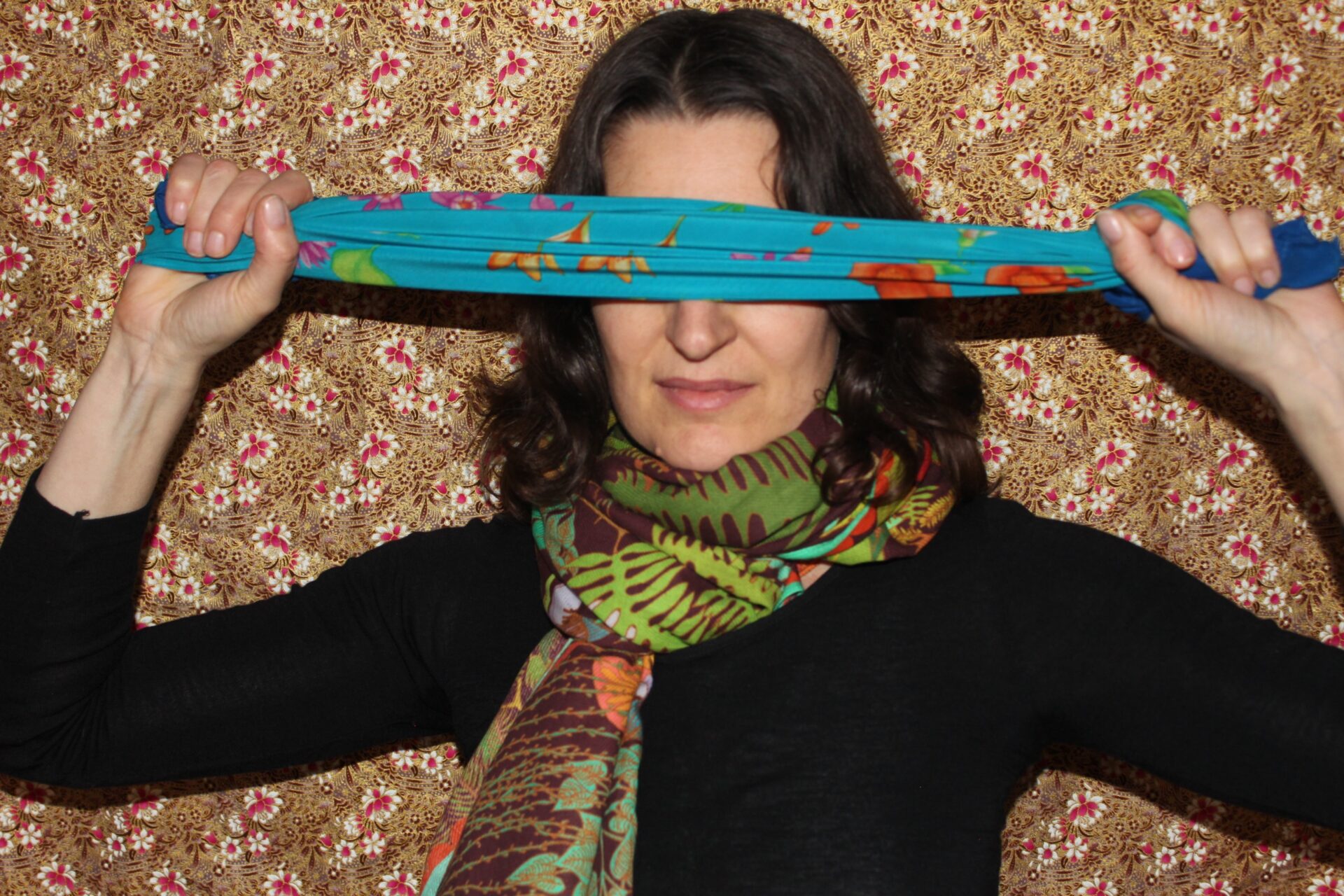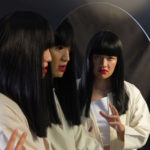Junkerry tweaks Our perceptions and experiences of sound, as she takes us into the future and brings Amaurosis to the UK this November. We catch-up and discuss her inspirations and themes in bringing the concepts behind this experiential installation to life. As she shares her ideas behind this evolution in spatial sound.
‘AMAUROSIS IS THE ART OF LISTENING, FLOATING THE LISTENER IN AN AURAL SEA’
GIITTV: Have you ever had Amaurosis?
JK: No, it a rare condition! Although I love listening to entire pieces of music with my eyes closed – removing sight really enhances all the other senses.
GIITTV: What is Amaurosis all about, what are the themes behind your work?
JK: Amaurosis is about the art of listening, floating the listener in an aural sea, where we can discover what happens when music is heard on a deeper level. We can connect with its primary intent – to create a state of trance, alteration and personal insight.
My work revolves around perception and intention and I applied these to the sound and visual aspects. We live in a visually over-stimulated world, believing that we must see something to trust in it. We judge how a performer looks? What they are wearing? How the set looks and so on and have a hard time refraining ourselves from digitally recording our everyday experiences.
‘WHEN YOU FOCUS INTENSELY, IT’S SO ENRICHING’
GIITTV: How does eliminating vision work?
JK: Eliminating vision brings the focus on listening. This allows our imagination to build its own space and narrative without any interference.
GIITV: How does Amaurosis alter the audience listening experience?
JK: The soundtrack never ends! While going from place to place, shopping, waiting on the phone line, and so on. Sadly, it comes in poor quality via mono speakers, computers or earplugs: Basically, everything is compressed. Spatial sound using 8 or more speakers has been around for a long time, although confined to contemporary spaces. I wanted a broader audience to experience it.
GIITTV: You are bringing Amaurosis to three planetariums in the UK. Can you tell us more about what people might expect when they attend one of the 4D performances?
JK: Audiences should come with an open and curious mind, to explore something very innovative. It will be challenging, like meditation, but when you focus intensely, it’s so enriching.
GIITTV: How did you get from inception to bringing the ideas to fruition?
JK: Asking an artist to explain their creative process is complicated! In Amaurosis, I used spatial sound tools as a primary element of my composition. Technology is only a tool to convey emotions, then I translate them to find a physical position in the mix, aiming to merge digital with organic sounds. I try to find the right medium to carry my first intention and ideas and share these with the audience without losing the rawness in the process.
‘MY VENN DIAGRAM STANDS ME BETWEEN MUSIC, ART & TECHNOLOGY’
GIITTV: You have worked on several projects including most notably Miss Baker’s Ride, and Pigment Channel, which was a Virtual Reality experience at The V&A Rodin Room. Tells us about your inspiration for these projects.
JK: My inspiration comes from exploring untrodden paths and finding innovative ways to tell a story. Doing the same thing over and over is creative death.
‘Miss Baker’s Ride’ gave me the chance to work with NASA using archive footage, to tell the heart-breaking but beautiful story of the first monkey to return from space alive. Collaborating allows me to explore ideas from diverse perspectives, different art forms and the stimulation of joining with other creative minds and amazingly talented people. My Venn diagram stands me between Music, Art and Technology.
When I did my first virtual reality project four years ago it was exciting because only a few artists were looking into it. Bjork did her VR exhibition two months later, so there was great excitement about virtual realist. To be honest, I feel it has a long way to evolve to be something more interesting. Still, it’s interesting to be at the spring of those moments and to have a taste of it.
The V&A installation was based in the Rodin Room and the piece explored the movement of sculpture from artist to artisan, to machine and into the future with artificial intelligence. This inspired my collaboration with King’s College for Amaurosis, as one project inspires the next.
‘THE ETHOS IS TO ENCOURAGE CHANGE, ALTER PERCEPTION AND VIEW THE WORLD WITH FRESH EYES.’
GIITTV: Can you tell us about some of the themes behind your work?
JK: Perception – exploration of how acoustics are received and how our idea about sound and music evolve through time and history, hence my interest in technology and sound research.
Exploring themes: What makes a sound or piece of music appear modern? Compared to some that feel old? How does music age? How does technology shape the way we listen to it? How do we tell a story using non-linear forms and different mediums?
GIITTV: In Amaurosis, after an intense listening experience, the audience take their blindfolds off and are brought back to earth with Lucy Hardcastle’s blend of graphics and CGI visuals. How does this work with the performance?
JK: In Amaurosis, the organic and digital are intertwined around the music, blending the visuals and questioning the real vs virtual. The textured sensuality of Lucy Hardcastle’s images respond to the layers and fabric of the music.
My intension was to stay abstract with the images. When eyes re-open, the audience is asked to look without judgement, without labelling what appears in their visual field. The ethos behind this is to encourage change, alter perception and view the world with fresh eyes.
‘IT IS ABOUT EXPLORING THE ESSENTIAL CHARACTERISTIC OF SOUND AND IMAGE AND THE RAWNESS OF OUR EXPERIENCE.’
GIITTV: Sound is the primary medium in your artwork and could be described as an invisible medium, in what way do you aim to make it tangible?
JK: I think and see music in terms of textures, fabrics and colours, involving a sense of touch, mood and moments. There’s a lot of layering, I like to use sounds that have a certain asperity, as well as shapes and surfaces that are sleek or rough and colours – aiming to link them more closely to mood and feelings.
Sounds are waves, as humans all we have are our sensations, the raw sensations that connect us to reality are the medium with which we read the world around us. Sometimes it is about exploring the essential characteristic of sound and image and the rawness of our experience. I’ve always been very interested in the tangible fabric of sound and music.
GIITTV: The audience members wear blindfolds, and an 8-speaker sound system transports them to within the very core of the music. Will listeners need additional speakers to fully immerse themselves in musical compositions of the future?
JK: There are different possibilities ahead of us. Binaural mixes have a bright future as more people are listening via headphones. Tools for rendering those mixes are emerging more and more, becoming accessible to composers and producers without huge expense or complexity.
Ways of mixing music in the future will expand far beyond gaming and sound effects. Theatrical and performing arts tools are slowly becoming more accessible to creators, with more possibilities for immersive performances. That’s partly what I am trying to do with my work.
GIITTV: How did the collaboration with Lucy Hardcastle and Kings College come about?
JK: I have been collaborating with King’s College since the The V&A last year. We have just agreed to a partnership for three more years, where I will have access and give feedback on the new technology they are developing.
With Lucy Hardcastle, I was introduced to her, as I worked with the Royal College of Art. I knew she would get what I was trying to do with Amaurosis and would be able develop visuals that would respond to the abstract yet melodic music score.
GIITTV: Finally, what’s next? What do you have lined-up for 2020?
JK: We want to take Amaurosis to more places. I’ve been invited to share the artwork in Princeton, USA and have high hopes for London, Berlin and back home in France.
You can experience a snippet of the show here with binaural sound programmed by Junkerry and visuals by Lucy Hardcastle.
Amaurosis Teaser
Amaurosis Teaser:
2019 brings you performances at the following venues:
Amaurosis 2019:
• Mon Nov 11 – Immersive Vision Theatre, Plymouth
• Wed Nov 13 – We The Curious, Bristol
• Thur Nov 14 – Think Tank, Birmingham




